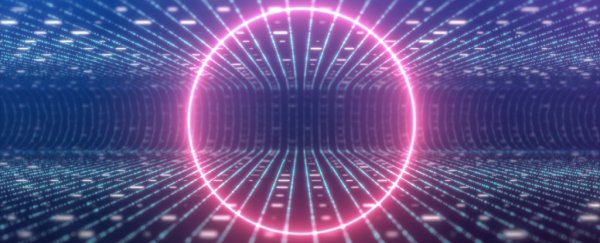
An AI Just Independently Discovered Alternate Physics
FIONA MACDONALD
29 JULY 2022
Grab any physics textbook and you'll find formula after formula describing how things wobble, fly, swerve and stop. The formulas describe actions we can observe, but behind each could be sets of factors that aren't immediately obvious.
Now, a new AI program developed by researchers at Columbia University has seemingly discovered its own alternative physics.
After being shown videos of physical phenomena on Earth, the AI didn't rediscover the current variables we use; instead, it actually came up with new variables to explain what it saw.
To be clear, this doesn't mean our current physics are flawed or that there's a better fit model to explain the world around us. (Einstein's laws have proved incredibly robust.) But those laws could only exist because they were built on the back of a pre-existing 'language' of theory and principles established by centuries of tradition.
Given an alternative timeline where other minds tackled the same problems with a slightly different perspective, would we still frame the mechanics that explain our Universe in the same way?
Even with new technology imaging black holes and detecting strange, distant worlds, these laws have held up time and time again (side note: quantum mechanics is a whole other story, but let's stick to the visible world here).
This new AI only looked at videos of a handful of physical phenomena, so it's in no way placed to come up with new physics to explain the Universe or try to best Einstein. This wasn't the goal here.
"I always wondered, if we ever met an intelligent alien race, would they have discovered the same physics laws as we have, or might they describe the Universe in a different way?" says roboticist Hod Lipson from the Creative Machines Lab at Columbia.
"In the experiments, the number of variables was the same each time the AI restarted, but the specific variables were different each time. So yes, there are alternative ways to describe the Universe and it is quite possible that our choices aren't perfect."
Beyond that, the team wanted to know whether AI could actually find new variables – and therefore help us explain complex new phenomena emerging in our current deluge of data that we don't currently have the theoretical understanding to keep up with.
For example, the new data emerging from giant experiments such as the Large Hadron Collider that hint at new physics.
"What other laws are we missing simply because we don't have the variables?" says mathematician Qiang Du from Columbia University.
So how does an AI find new physics? To start with, the team fed the system raw video footage of phenomena they already understood and asked the program a simple question: What are the minimum fundamental variables needed to describe what's going on?
https://youtu.be/eZ2u22kcz60
The first video showed a swinging double pendulum that's known to have four state variables in play: the angle and angular velocity of each of the two pendulums.
The AI mulled over the footage and the question for a few hours and then spat out an answer: This phenomenon would require 4.7 variables to explain it, it said.
That's close enough to the four we know of… but it still didn't explain what the AI thought the variables were.
So the team then tried to match up the known variables to the variables the AI had chosen. Two of them loosely matched up to the angles of the arms, but the other two variables remained a mystery. Still, the AI could make accurate predictions about what the system would do next, so the team figured the AI must have been onto something they couldn't quite grasp.
"We tried correlating the other variables with anything and everything we could think of: angular and linear velocities, kinetic and potential energy, and various combinations of known quantities," says software researcher Boyuan Chen, now an assistant professor at Duke University, who led the work.
"But nothing seemed to match perfectly … we don't yet understand the mathematical language it is speaking."
The team then went on to show the AI other videos. The first featured a wavy arm 'air dancer' blowing in the wind (the AI said this had eight variables). Lava lamp footage also produced eight variables. A video clip of flames came back with 24 variables.
Each time, the variables were unique.
"Without any prior knowledge of the underlying physics, our algorithm discovers the intrinsic dimension of the observed dynamics and identifies candidate sets of state variables," the researchers write in their paper.
This suggests that in the future, AI could potentially help us to identify variables that underpin new concepts we're not currently aware of. Watch this space.
The research has been published in Nature Computational Science.
https://www.sciencealert.com/ai-has-discovered-alternate-physics-on-its-own
Thanks to: https://www.sciencealert.com






 Sat Mar 23, 2024 11:33 pm by globalturbo
Sat Mar 23, 2024 11:33 pm by globalturbo

